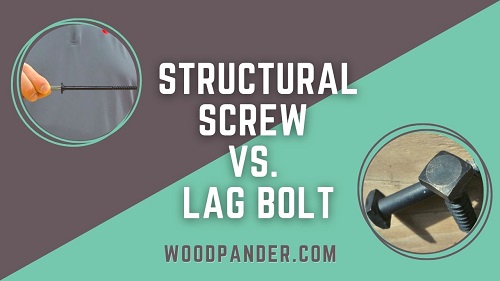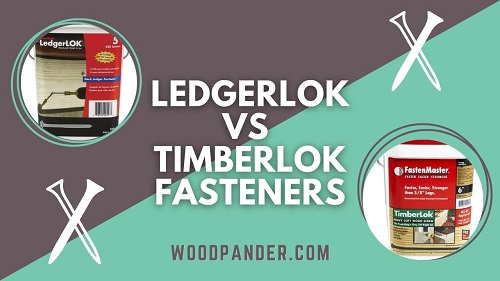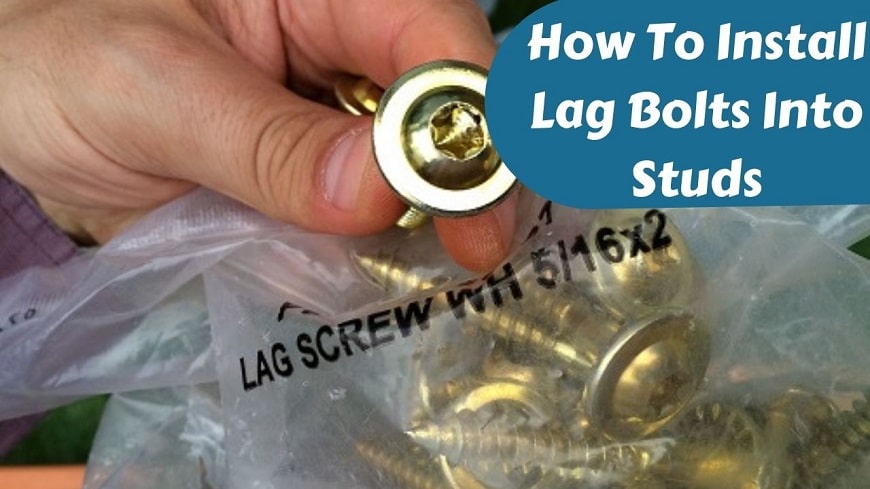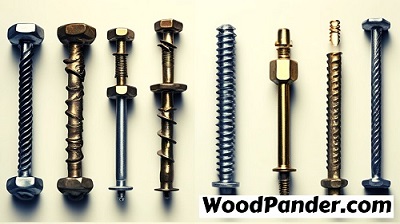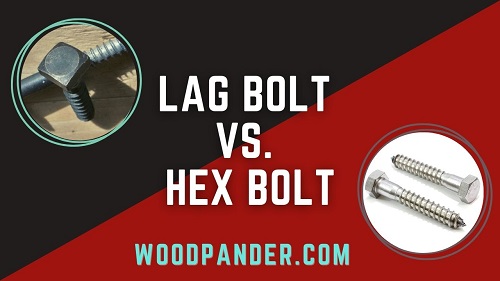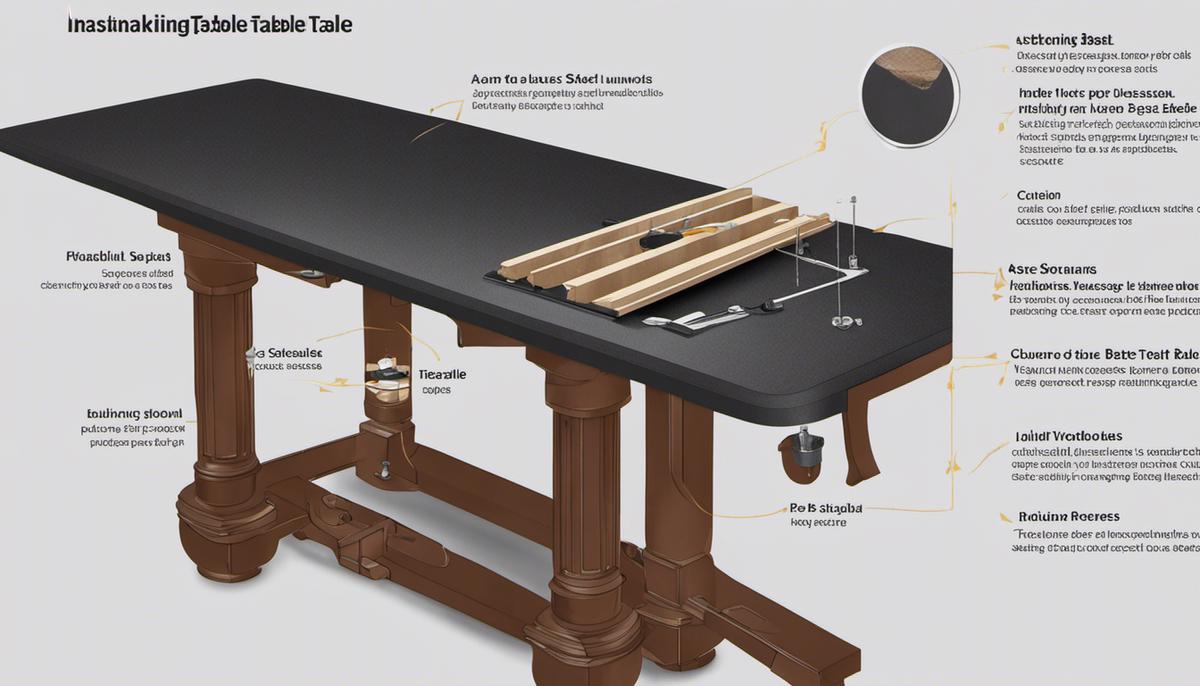Ledger locks and lag bolts are the most common items for woodwork. As both are screws and pretty much identical, it’s hard to know the differences.
So, which one should be your pick if we go ledger locks vs. lag bolts? Well, that depends on your requirements.
Ledger locks or ledger fastening screws are mostly carbon steel and used to secure joins without a washer and drilling. In contrast, Lag bolts are screws mostly made of stainless steel and capable of holding up leam beams.
They have many more differences. Know the benefits and drawbacks to pick the best one for you.
Key Comparison Table between Ledger Locks and Lag Bolts
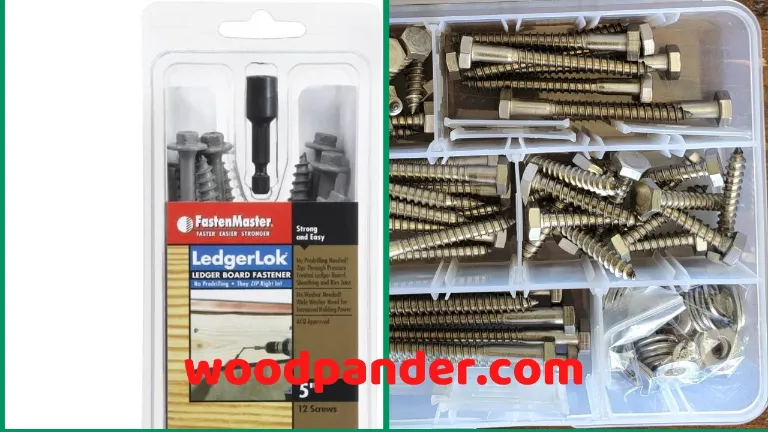
If you are in a hurry, check the difference between ledger locks and lag bolts at a glance. This table will let you the basic and premise information about them.
| Features | Ledger Locks | Lag bolts |
| Material | Mostly carbon steel | Mostly stainless steel |
| Head style | Hex, Multi-lobe, Flat, etc. | Hex |
| Drive system | External hex, Torx, one way, etc. | External Hex |
| Pre-drilling requirement | No | Yes |
| Required force | Doesn’t need much force | Needs additional force |
| Availability | Not as much as lag bolts | Higher availability |
| Weight holding | Lower | Higher |
| Washer | The washer is built-in | Need washer to set up securely |
| Ease of use | Quick and easier to set up | Time-consuming and hard to install |
| Upfront price | Requires at least $0.7/count or more | Can be as low as 0.11/count |
| Setup expenses | Isn’t much | Comparatively more |
| Suitable project | Suitable for projects that requires quick and affordable solution | Suitable for heavy-duty application for prolong the project lifespan |
| Size | 1 specific size | 5 different sizes |
See Also: LedgerLOK Vs. TimberLOK Fasteners.
Overview Of Ledger Locks?

The ledger locks come to save money and labor cost with its free 5/16″ driver bit. You can use these locks for joining two ledger boards without drilling and requiring any washer.
On top-notch, it gets Alkaline Copper Quaternary (ACQ) approval as a woodworking material free from arsenic and chromium. So it is environmentally friendly and suitable for long-lasting decks and safe outdoor projects. However, though they are not as tough as lag bolts, they are easy and quick alternatives.
What You Get In The Box
- 12 pieces of 5 inches locks
Pros
- It doesn’t require pre-drilling and separate washers
- Excellent work, even for heavy stuff
- Easier to install and a tremendous time saver
Cons
- It doesn’t hold as much weight as lag bolts
Whom Are These Locks For?
It’s best for projects where the joints won’t need to hold much weight, so the locks are ideal for light woodwork. Though it can be used more in numbers to hold more weight, that isn’t recommended. Since adding too many screws may damage the board itself.
Overview Of Lag Bolt?
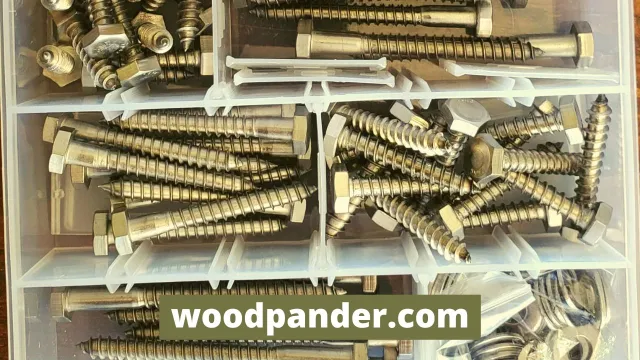
Lag bolts, also known as lag screws, are one of the toughest fastener types that help to secure two heavy materials or hold up heavyweight after fastening the materials. For each lag bolt, it requires two drilled holes.
They are mainly used for heavy-duty applications, which won’t require pre-drilling. The drilled hole needs to be precise for optimal performance of the bolts. Even after pre-drilling, you need to put extra force into setting them up because of their structure.
They come at a comparatively affordable price. It costs less if you buy them in boxes, especially the longer bolts.
What You Get In The Box
- 6 pieces ¼x3 inches bolts
- 8 pieces ¼×2½ inches bolts
- 10 pieces ¼×2 inches bolts
- 15 pieces ¼×1½ inches bolts
- 15 pieces ¼×1 inches bolts
- 54 pieces ¼ inches flat washers
Pros
- Perfect for all woodworks that require strength
- Corrosion resistance ensures the durability of your projects
- Various sizes meet multiple purposes
Cons
- Some users complained about their rougher thread edges
Whom Are These Bolts For?
The Lag Bolts are usually used in home projects like lam beams, roofing, building decks, securing house joints, fixing stairs, etc. So if you are a professional woodworker or a home improvement contractor, you must need these bolts to uplift your project’s joining quality.
See Also:
Ledger Locks vs. Lag bolts Detail Comparison
Learning the critical difference may not be enough to clearly understand which one to choose. Knowing the details and understanding them will be a lot more beneficial. So here’s the in-depth analysis
Material
Ledger locks
Ledger locks are constructed with carbon steel, which makes them durable enough to offer your long-lasting joint with no risk of corrosion.
Lag bolts
As you can see in the comparison table, lag bolts are usually made of stainless steel. That keeps them safe from corrosion, making them durable. Apart from this, some other materials are used for lag bolts, like alloy steel or steel.
Winner: Lag bolts
Finish
Ledger locks
Ledger locks usually have a plain and galvanizing finish to make the project look as lucrative as possible.
Lag bolts
The most common external finish for lag bolts is stainless steel, galvanization, or oxide finish. The finishing altogether with the material helps increase the durability of these screws.
Winner: Lag bolts
Washer Requirements
Ledger locks
In comparison, ledger locks have built-in washers that help save both your time and money.
Lag bolts
Setting up lag bolts with washers is good to place them more securely. They often come with the lag bolt box, or you may need to buy them separately.
Winner: Ledger locks
Weight holding Capacity
Ledger locks
Ledger locks are better for lightweight holding than heavier projects. So these are still strong enough to be holding up joints securely.
Lag bolts
Lag bolts are suitable to hold an intense load, as the washers and double holes help securely hold the weight.
Winner: Lag bolts
Availability and price
Ledger locks
Ledger locks are comparatively expensive and not much available. These locks cost more than $.7/ count, so they are unsuitable for big projects.
Lag bolts
Lag bolts are comparatively more available, and the price difference depends on the size, type, brand, finishing, and washer. You can get them at $0.11/ count, to the very least. You will see the prices under $1/count on average. But lag bolts come at about $5/ count or more.
Winner: Lag bolts
Check this guide to know more: Laguna Vs Harvey Band Saw.
Check our latest guide: Laguna 14/12 Vs. Rikon 10-326 Bandsaw.
Beyond Choosing: Maximizing Ledger Board Security
While choosing the right fastener between Ledger Locks and Lag Bolts is crucial for a secure ledger board, several additional tips can further enhance the connection and ensure your deck’s stability:
1. Size and Type:
- Ledger Locks: Use the specific model recommended for your ledger board thickness and building code requirements.
- Lag Bolts: Choose the appropriate diameter and length based on the ledger board and house framing dimensions. Opt for hot-dipped galvanized or stainless steel for superior rust resistance.
2. Spacing and Placement:
- Follow the recommended spacing specified by the fastener manufacturer or building code, typically around 12-16 inches on center.
- Position fasteners strategically, avoiding knots and cracks in the ledger board.
- Ensure all fasteners penetrate the house framing by at least 2 inches.
3. Torque Perfection:
- Invest in a torque wrench to ensure precise tightening of fasteners.
- Under-tightening can lead to loose connections and potential deck movement.
- Over-tightening can damage the ledger board and reduce its strength.
- Refer to the fastener manufacturer’s specifications for the proper torque value.
4. Additional Recommendations:
- Flashing: Install flashing along the top of the ledger board to prevent water intrusion and rot.
- Moisture Barrier: Use a self-adhesive membrane between the ledger board and house wall for additional protection from moisture.
- Regular Inspection: Regularly check the ledger board and fasteners for any signs of wear or damage.
By following these additional tips, you can ensure a robust and secure connection between your ledger board and house, maximizing the safety and longevity of your deck. Remember, investing in proper installation and meticulous attention to detail will pay off in the long run, allowing you to enjoy your deck for years to come.
Which One Is Better? Ledger Locks vs. Lag bolts
This answer depends on the project requirements. Both of them have their own benefits and disadvantages. You can’t choose one for all purposes. Knowing the differences would have already let you determine that.
Ledge locks are more for fastening boards, framing, changes in the interior or exterior of the home, etc.
As for lag bolts, they are more suitable for projects like household renovation, repairing, and adding extra decks for family gatherings.
How Far Apart Should Lag Bolts be on a Ledger Board?
The ideal spacing for lag bolts on a ledger board depends on the joist span. A good rule of thumb is to space them 16 inches on center for joists up to 12 feet long.
Longer joists require closer spacing (around 11-12 inches) for optimal strength and stability.
How Many Lag Bolts Do You Need for Your Deck Ledger?
The number of lag bolts you need for your deck ledger depends on several factors, including:
- Length of the ledger board: Longer boards require more fasteners for adequate support.
- Joist span: The distance between joist supports influences the number of bolts needed per joist connection.
- Local building codes: Specific requirements may dictate the minimum number and spacing of fasteners.
Here’s a general guideline for lag bolt spacing on a deck ledger board:
- Joist span up to 12 feet: 16 inches on center (two rows of fasteners with 8 inches spacing within each row)
- Joist span of 12-16 feet: 12 inches on center (two rows with 6 inches spacing within each row)
- Joist span over 16 feet: Consult a professional engineer for specific recommendations
Additional factors to consider:
- Lag bolt diameter and type: Thicker bolts may require different spacing than standard 1/2-inch bolts.
- Ledger board thickness: Ensure the bolts are long enough to penetrate the ledger board and grip securely into the house framing.
Always consult your local building code and follow the manufacturer’s specifications for your chosen lag bolts. It’s better to err on the side of caution and use more fasteners than necessary for maximum deck stability and safety.
How Many Lag Screws for Ledger Board?
The number of lag screws you’ll need for your ledger board depends on several factors, including:
- Length of the ledger board: More screws are needed for longer boards.
- Spacing between screws: This is typically specified by the manufacturer or local building codes.
- Size of the screws: Larger screws require fewer to achieve the same strength.
- Joist size and span: Larger joists and longer spans require more screws for support.
Here’s a general rule of thumb:
- 10-foot ledger board: Approximately 8 screws with 16-inch spacing and 1/4″ x 4″ lag screws.
- 12-foot ledger board: Approximately 9-10 screws with 16-inch spacing and 1/4″ x 4″ lag screws.
- 16-foot ledger board: Approximately 13-14 screws with 16-inch spacing and 1/4″ x 4″ lag screws.
Always consult the manufacturer’s recommendations and local building codes to determine the exact number of screws needed for your specific project.
Lag Bolt Alternatives: Building a Safe and Secure Deck
Lag bolts are a common choice for securing ledger boards in deck construction. However, they require pre-drilling, which can be time-consuming and increase the risk of errors.
Fortunately, several alternatives offer a faster and potentially easier installation process while maintaining the required strength and security.
Here are some popular alternatives to lag bolts for attaching your ledger board:
Structural Screws
When building a deck, securing the ledger board to the house’s structure is a crucial step. While traditional lag bolts have long been the go-to solution, they come with the inconvenience of requiring pre-drilling, which can be time-consuming and prone to errors. Thankfully, a modern alternative has emerged: structural screws.
- Features:
- Self-drilling tip eliminates pre-drilling
- Large washer head for increased bearing surface
- Available in various lengths and materials
- Benefits:
- Faster installation than lag bolts
- Reduced risk of splitting the ledger board
- Strong and reliable connection
- Drawbacks:
- May not be as strong as some other options
- Requires a specific driver bit
Through-Bolts
When it comes to building a strong and stable deck, the foundation is key. And at the heart of that foundation lies the often-overlooked hero: the through-bolt. Though not as flashy as their flashier counterparts like Ledger Locks, through-bolts play a crucial role in ensuring the longevity and safety of your outdoor oasis.
Unlike lag bolts which require pre-drilling and can be time-consuming, through-bolts offer a straightforward approach.
They consist of a long threaded rod, nut, and washer, offering a simple and robust solution for fastening the ledger board to the house frame.
- Features:
- Large diameter provides high strength
- Nuts and washers offer secure tightening
- Benefits:
- Extremely strong and secure connection
- Ideal for heavy-duty decks
- Drawbacks:
- Requires pre-drilling larger holes
- More time-consuming installation than other options
- May be less aesthetically pleasing
Concrete Nails
Concrete nails are often overlooked in the construction world, overshadowed by their flashier counterparts like lag bolts and structural screws. However, these unassuming nails offer a unique set of advantages that make them invaluable for specific applications.
- Features:
- Specifically designed for fastening to concrete
- Available in various lengths and head styles
- Benefits:
- Simple and quick installation
- No pre-drilling required
- Cost-effective option
- Drawbacks:
- Not as strong as other alternatives
- May not be suitable for all types of decks
Choosing the Right Option:
The best lag bolt alternative for your project will depend on various factors, including your budget, skill level, and project requirements. Here are some things to consider:
- Budget: Ledger Locks and structural screws are typically more expensive than lag bolts, while concrete nails are the most affordable option.
- Skill Level: Ledger Locks and structural screws are easier to install than lag bolts, especially for beginners. Through-bolts require more precise pre-drilling and may be more challenging for less experienced DIYers.
- Project Requirements: For heavy-duty decks or projects requiring a high level of strength, through-bolts may be the best choice. Ledger Locks and structural screws offer a good balance of strength and ease of installation for most decks.
Summing It Up
It may seem like what effects can a screw possibly have on the project? Is it necessary to give this much attention?
Honestly, it is essential. Every small thing of the project matters and is capable of changing the performance. It is better to pay attention to every single thing from the very first.
So, what is your next project? And what’s your pick regarding ledge locks vs. lag bolts for that project? Let us know in the comment section.
Related Questions
What is better than lag bolts?
Ledger screws, such as structural screws specifically designed for ledger board attachment, are considered by some to be a better alternative to lag bolts due to their enhanced strength, ease of installation, and resistance to corrosion.
What size lag bolts for deck ledger?
Typically, 1/2-inch diameter lag bolts are commonly used for attaching deck ledgers to a house. However, the exact size and quantity may vary based on local building codes and the specific requirements of the deck.
What are ledger locks used for?
Ledger locks are heavy-duty screws or bolts designed for securely fastening deck ledgers to a house. They are specifically engineered to provide strong connections and prevent ledger failure or deck collapse.
What are the best fasteners for ledgers?
The best fasteners for ledgers depend on various factors such as load requirements, building codes, and personal preference. Options include lag bolts, ledger screws, and structural screws, among others. Consultation with a structural engineer or local building authorities can help determine the most suitable fastener for a specific deck project.
Are lag bolts stronger than screws?
Generally, in terms of shear strength and load-bearing capacity, high-quality structural screws are considered to be stronger than traditional lag bolts. However, the specific application, installation technique, and quality of the fasteners can significantly impact their strength and performance.
Which one is more affordable between Ledger locks vs. lag bolts?
If you go by upfront price, lag bolts are the affordable ones. But as they require washers and drilling, ultimately, they need a bigger budget. In that context, ledger locks are more affordable to set up.
Which material is better between Ledger locks vs. lag bolts?
Here, it is essential to know that stainless steel is better than carbon steel in terms of strength and corrosive protection. As a result, lag bolts made of stainless steel are a better choice than carbon steel's ledger locks for durability.
Do lag bolts weaken studs?
Yes, if you use traditional lag bolts, they can weaken studs by quickly stripping and losing traction.
When would you use a lag bolt?
Tag bolts are ideal for projects with heavy weight, like a heavy limber.
Resources:
https://www.sciencedirect.com/science/article/pii/S1877056823001524

